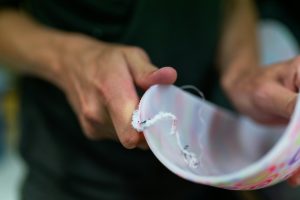Classic Car Restoration: Where to Begin
Ask any classic car enthusiast and chances are they will have a dream of restoring their own vintage ride. While it may seem daunting at first, with the right knowledge and resources, classic car restoration is not only achievable, but also a rewarding experience. However, the key to a successful restoration project is knowing where to begin. In this article, we will discuss the essential steps to take when starting a classic car restoration project.
What is Classic Car Restoration?
Classic car restoration is the process of bringing an old or damaged vehicle back to its original, or even better, condition. Whether you are a seasoned car enthusiast or a beginner looking to start your first restoration project, it is crucial to have a clear understanding of what this process entails.
The first step in any restoration project is to determine your goals. Do you want to keep the car as close to its original form as possible, or are you looking to customize it with modern upgrades? Depending on your preference, you will need to decide on the level of restoration – from a complete, frame-off restoration to a simple cosmetic fix.
Where to Begin the Restoration Process
Now that you have a good understanding of what classic car restoration is, it’s time to dive into the actual process. Here are the essential steps to take when beginning a classic car restoration project:
1. Research and Gather Information
Before starting any restoration project, it is crucial to do your research. Get your hands on any information you can find about the make, model, and year of your vehicle. This includes original manuals, repair guides, and even online forums and communities where you can connect with other classic car enthusiasts. The more knowledge you have about your car, the better equipped you will be to make informed decisions throughout the restoration process.
2. Assess the Condition of the Car
Once you have gathered all the necessary information, it’s time to assess the condition of your car. Inspect the body, interior, and engine for any signs of damage or wear. Take note of any parts that need to be completely replaced and those that can be restored. This will give you a better understanding of the extent of the restoration required and will help you plan your budget accordingly.
3. Create a Detailed Plan
Before you start working on the car, it’s essential to have a detailed plan in place. This should include a timeline, budget, and a breakdown of the tasks that need to be completed. This will not only help keep you organized but will also prevent any unexpected roadblocks down the line.
4. Start with the Basics
When it comes to classic car restoration, it’s best to start with the basics. Begin by addressing any mechanical issues and making necessary repairs or replacements. Once the car is running smoothly, move on to the bodywork and interior. It’s crucial to have a strong foundation before moving on to the cosmetic aspects of the car.
5. Pay Attention to Detail
The key to a successful restoration project is paying attention to detail. Whether it’s the paint job or the interior upholstery, make sure that every aspect is done to perfection. This will not only increase the value of your car but will also give you a sense of pride for a job well done.
Final Thoughts
Classic car restoration is a labor of love that requires patience, dedication, and a love for the craft. By following the essential steps outlined in this article, you can kick off your journey to restoring your dream classic car. Remember, the process may be challenging, but the end result will be worth it. Happy restoring!











